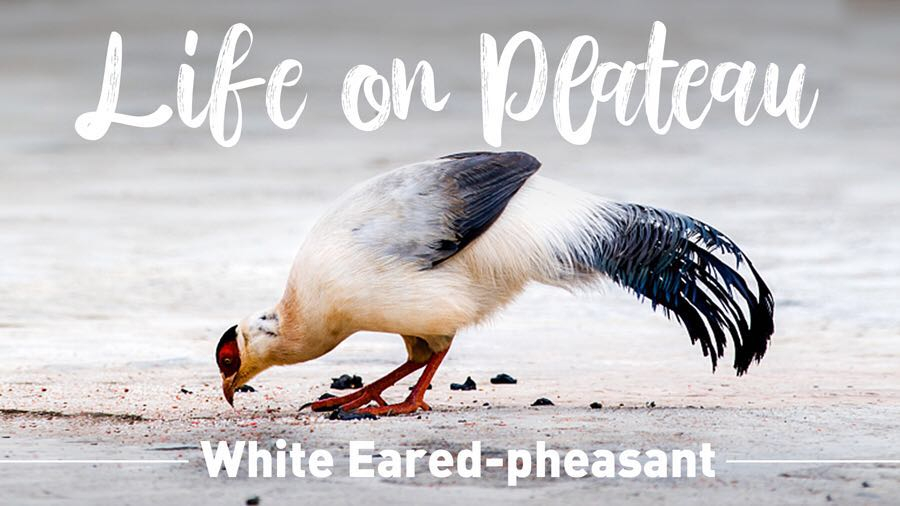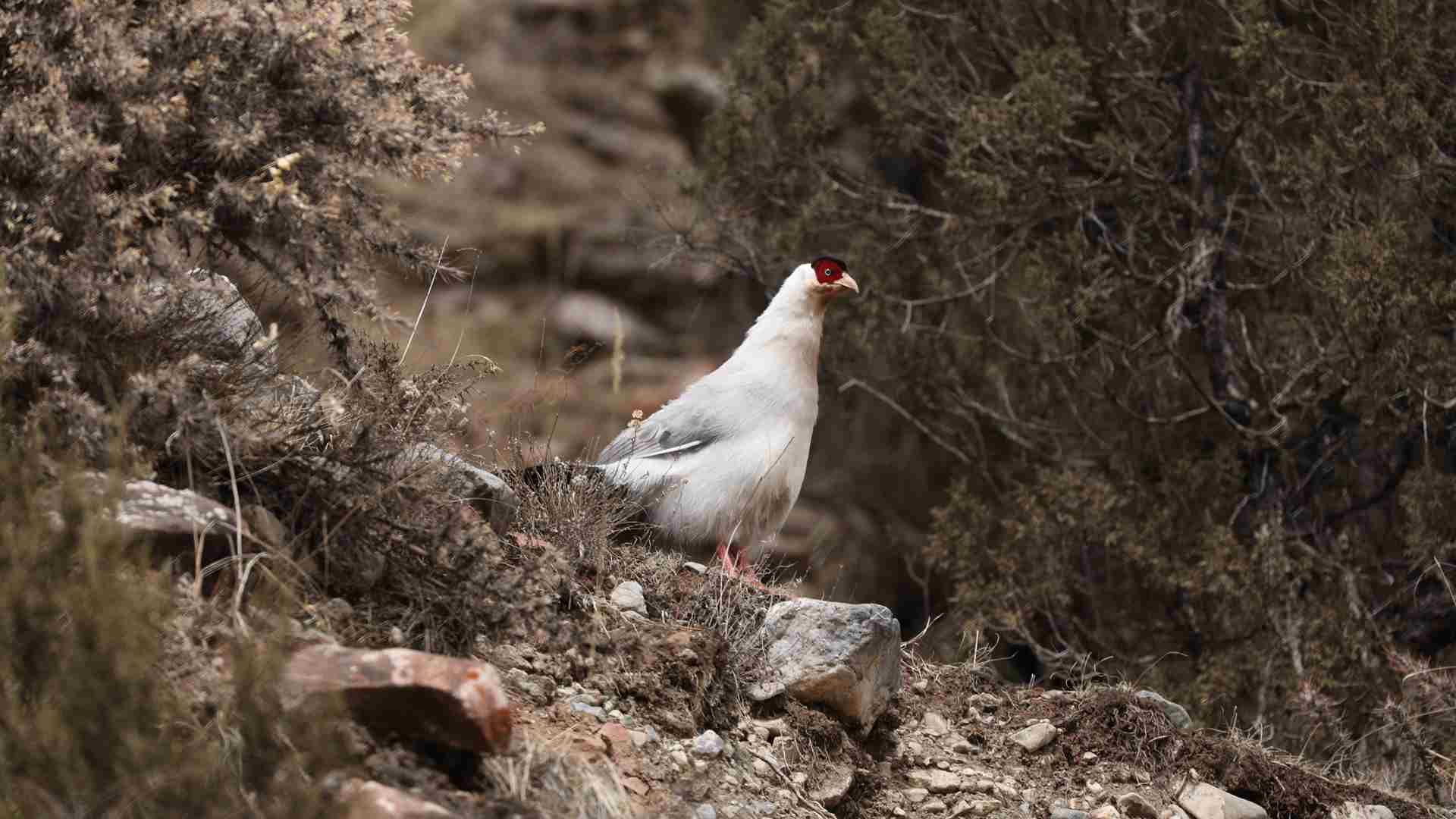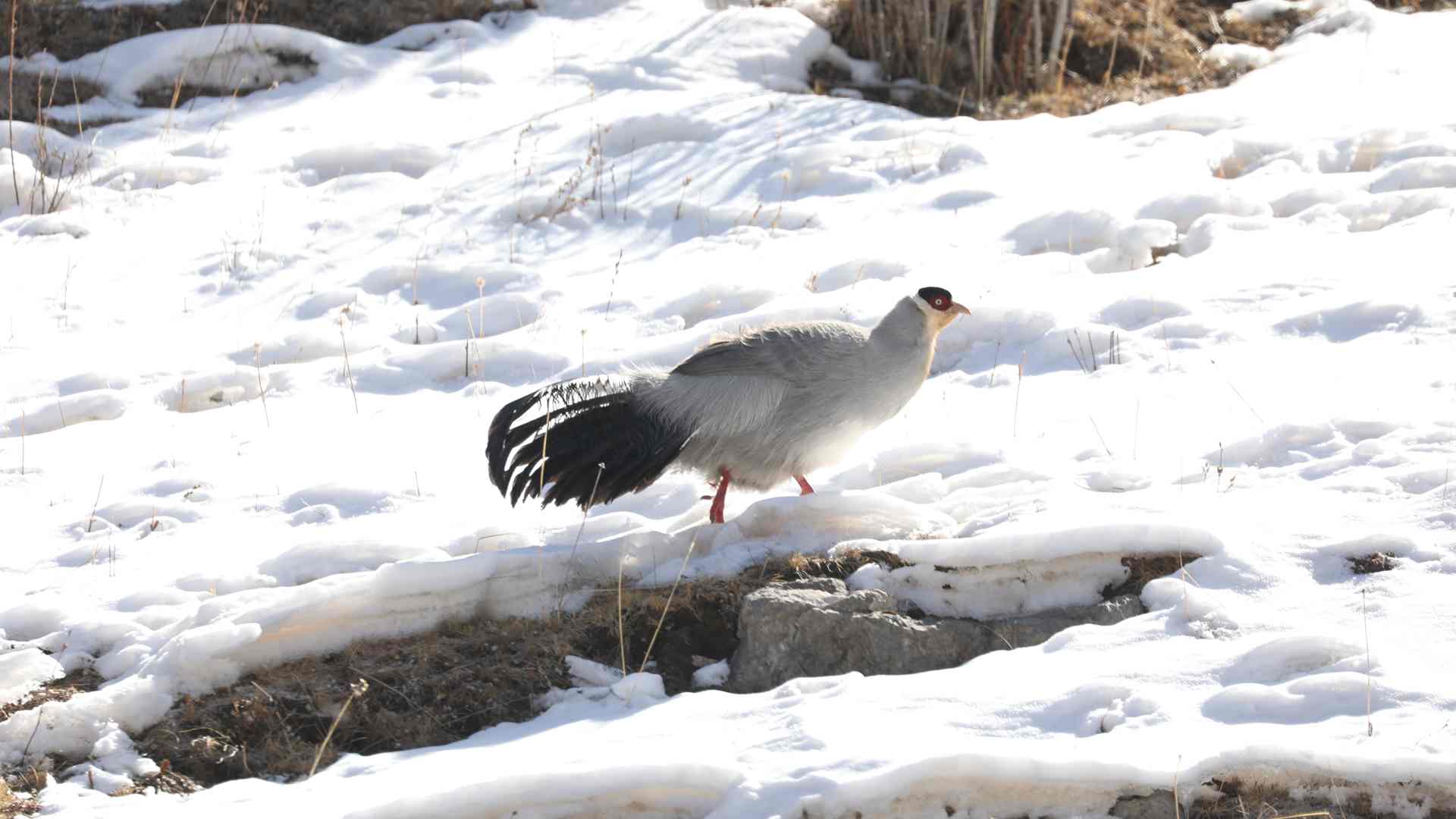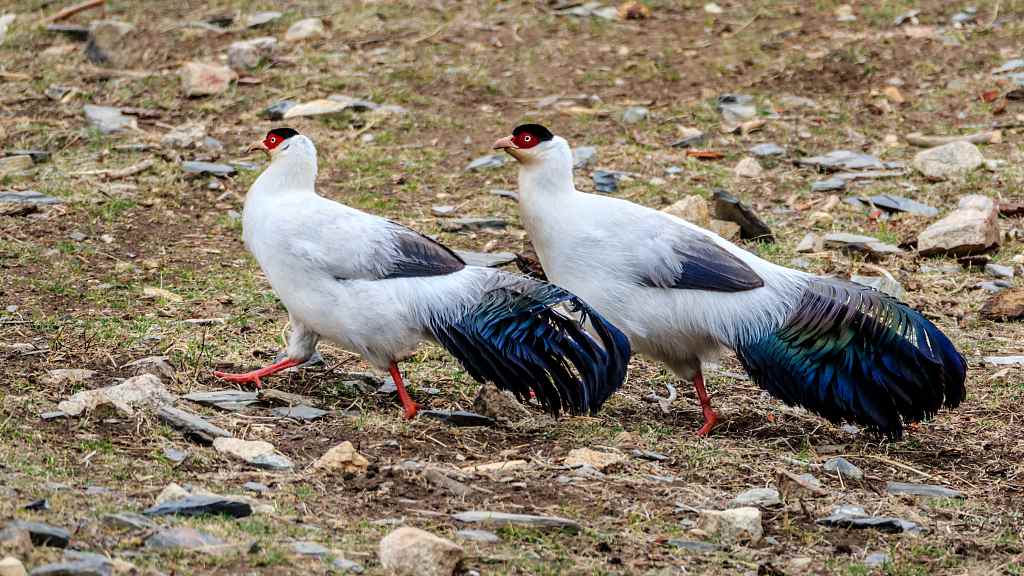
Animal
11:43, 30-Apr-2019
Life on Plateau: White eared-pheasant, ancient pheasant that evolves on plateau
By Zhu Yingming
00:38

Native to the eastern Qinghai-Tibet Plateau in China, the white eared-pheasant is a typical alpine pheasant that dwells in the forest and shrubland at an elevation of 2,800-4,600 meters.
Brian Houghton Hodgson first named the white eared-pheasant in 1838. Their ancestors could date back to the Quaternary ice age when the plateau kept rising up.

A white eared-pheasant at Zadoi County of the Yushu Tibetan Autonomous Prefecture, northwest China's Qinghai Province. /Photo by CGTN's Li Yunqi
A white eared-pheasant at Zadoi County of the Yushu Tibetan Autonomous Prefecture, northwest China's Qinghai Province. /Photo by CGTN's Li Yunqi
As a gregarious bird, the white eared-pheasant live in large flocks of as many as 100 individuals in winter. With the breeding season comes in spring, turmoil emerges and the group falls apart.
As a couple, however, they always stay together. The male bird walks behind the female, making sure that its mate eats enough for breeding their offspring.
Being confronted with other males, it manifests the unique showing off a pattern from the side: making special chirps while lowering the head, slightly spreading the wings and tail feathers. But if the opponent seems way too strong, it would curl up and pretend to be pecking or grooming itself.

White eared-pheasants at Zadoi County. /Photo by CGTN's Li Yunqi
White eared-pheasants at Zadoi County. /Photo by CGTN's Li Yunqi
As a large pheasant, the white eared-pheasant can grow up to a meter in length.
They prefer foraging for tubers and grassroots in the lower valley shrubland. Not as easily terrified as other pheasant species, they sometimes look for food in the crop fields adjacent to the forest.

The white eared-pheasant. /Photo by CGTN's Li Yunqi
The white eared-pheasant. /Photo by CGTN's Li Yunqi
Hunting and habitat loss have been major threats for the white eared-pheasant.
The global population in the wild is estimated at 10,000-50,000 and is slowly declining.
It is considered as "near threatened" on the IUCN Red List and is under second-class state protection in China.

White eared-pheasants. /VCG Photo
White eared-pheasants. /VCG Photo
(Top image: Designed by CGTN's Liu Shaozhen. Video by CGTN's Li Yunqi and Xing Fangyu.)
(If you want to contribute and have specific expertise, please contact us at nature@cgtn.com.)

SITEMAP
Copyright © 2018 CGTN. Beijing ICP prepared NO.16065310-3
Copyright © 2018 CGTN. Beijing ICP prepared NO.16065310-3